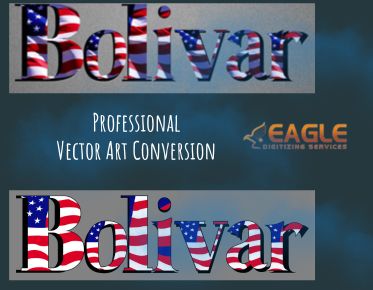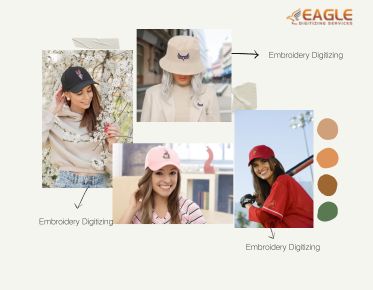Make Downloaded Embroidery Designs Truly Yours
In the world of embroidery,
the ability to transform a simple design into something truly unique is what
makes the craft so enchanting. Whether you're a beginner or an experienced
embroiderer, customizing downloaded embroidery designs
offers you the chance to put your stamp on every project. From small tweaks to
major adjustments, the process is a wonderful way to explore your creativity
and elevate your work to the next level. It’s not just about stitching—it’s
about crafting something that reflects your style, vision, and imagination.
Why Customizing Embroidery Designs Is the Key to Unique Projects
Customization is
the cornerstone of individuality in embroidery. Think about the last time you
admired a design—was it because it felt like it had a personality of its own?
When you customize embroidery designs, you're giving life to something that’s
no longer just a pre-made graphic but a piece that tells your story. By adding
personal touches, like colors that match your vibe, or changing the scale to
fit your project perfectly, you turn any pattern into something that’s
distinctly yours.
Tools You’ll Need for Customizing Embroidery Designs
Must-Have
Software for Editing Embroidery Files
Reliable
embroidery software is essential for any customization work. Programs like
Adobe Illustrator (with embroidery plug-ins) or specialized tools like Hatch or
Wilcom provide all the tools you need to resize, recolor, and tweak designs
with ease. These tools also allow you to preview your customizations before you
stitch, helping you make informed decisions without wasting thread or fabric.
Choosing
the Right Embroidery Machine for Customization
While
customization can happen at the software level, the machine you use also plays
a significant role in the process. Modern embroidery machines from brands like
Brother, Bernina, and Janome offer features like adjustable stitch density and
built-in color palettes, making them ideal for custom projects. A machine with
a larger embroidery field will also give you the flexibility to work on bigger
designs.
Accessories
That Can Enhance Your Customization Process
There are plenty
of accessories that can elevate your customization game. From specialized hoops
that allow you to stitch larger designs to custom thread holders that prevent
tangling, the right tools can make a huge difference. Consider investing in a
stabilizer, too—it ensures that your fabric stays in place during stitching,
preventing puckering and ensuring a crisp finish.
Basic Customization: Resizing and Scaling Your Design
How
to Resize Embroidery Designs Without Losing Quality
One of the most
common customizations is resizing, but it’s not as simple as just enlarging or
shrinking a design. Resizing must be done carefully to ensure the stitches
remain proportional and the design doesn’t lose detail. Some embroidery
software programs offer a feature that automatically adjusts stitch density as you
resize, ensuring the design doesn’t become too sparse or too dense.
The
Importance of Stitch Density When Resizing
How closely the
stitches are spaced together is referred to as stitch density. If you resize a
design and don’t adjust the stitch density, you could end up with uneven
stitching, which can affect the overall quality. When resizing a design, it’s
important to maintain the appropriate density for the scale, ensuring a
balanced and professional finish.
Avoiding
Distortion: Tips for Keeping Proportions in Check
Distortion is a
real concern when resizing embroidery designs, especially when scaling elements
disproportionally. To avoid this, it’s essential to lock aspect ratios (the
relationship between width and height) during resizing, which helps maintain
the integrity of the design. Additionally, resizing each part of a design
individually, rather than all elements at once, can help maintain proportion.
Changing the Colors: Personalizing Your Embroidery Designs
How
to Adjust Thread Colors for a Custom Look
One of the most
exciting aspects of customizing an embroidery design is playing with colors.
Adjusting thread colors allows you to create a custom look that aligns with
your project’s theme. Whether you’re mimicking your brand’s color scheme or
matching the hues of a fabric, the right thread can completely alter the
aesthetic of the design.
Using
Color Palettes and Inspiration for Your Embroidery Projects
Color palettes
are your best friend when it comes to consistency in your designs. Many
embroidery software programs come with built-in palettes, or you can create
your own. Online tools like Adobe Color Wheel can also help you choose
complementary shades that work well together, ensuring a balanced and cohesive
look.
Matching
Colors to Your Fabric: Creating Harmonious Designs
Different fabrics
react to colors in various ways. Fabrics like silk, denim, and leather all have
different textures that can make colors appear lighter or darker. When
customizing a design, it’s important to test the colors on the fabric before
you start stitching to ensure the final result is exactly what you envision.
Adding Text and Monograms to Your Designs
How
to Add Custom Text to Your Embroidery Design
Adding text to an
embroidery design is one of the most straightforward ways to personalize it.
Whether you’re adding a monogram to a towel or a witty phrase to a shirt,
software programs allow you to easily insert custom text. You can adjust the
size, font, and position to make the text a standout feature of the design.
Choosing
the Right Font: Tips for Clear and Readable Text
The font you
choose is critical for readability, especially for small designs. Stick to
clean, simple fonts for smaller text, and reserve more decorative fonts for
larger, more prominent areas. Always preview the design at the actual size
before stitching to ensure that the text remains legible.
Incorporating
Initials or Names into Your Embroidery for a Personal Touch
Personalization doesn’t
have to stop at text. Adding initials or full names to a design is a great way
to create one-of-a-kind gifts or keepsakes. Incorporating these small details
into a design makes it feel more special and tailored to the recipient.
Modifying Stitch Types for a Unique Effect
Exploring
Different Stitch Types for Different Looks
Stitch types can
make a huge impact on the final look of your design. From simple satin stitches
to intricate fills, each type offers a different texture and effect.
Experimenting with stitch types can give your designs a unique flair—whether
you want a classic, smooth finish or something with more texture and depth.
Changing
Stitch Styles to Suit Your Design Theme
The style of
stitching you choose should complement the overall theme of your design. For
example, a floral design may look stunning with a combination of satin and fill
stitches, while a geometric design might benefit from sharp, straight stitches.
The key is to use the right stitch to enhance the design’s aesthetic.
Using
Specialty Stitches for Added Texture and Interest
Specialty
stitches, like French knots or chain stitches, can add texture and visual
interest to your embroidery. These stitches are perfect for adding intricate
details or small embellishments that make your design feel more artistic and
personal.
Combining Multiple Designs: Creating a Collage of Embroidery Art
How
to Merge Different Embroidery Files into One Design
One of the most
exciting aspects of customization is combining different designs into one
cohesive artwork. This process allows you to create a collage of embroidery,
bringing multiple elements together in a harmonious way. Software programs make
it easy to merge files by adjusting their positioning, resizing, and aligning
them to create a unified piece.
Layering
Designs for a Rich, Multi-Dimensional Look
Layering designs
create depth and visual interest. By overlapping elements and adjusting their
order, you can add dimension to your project. This technique is particularly
effective for creating multi-layered, intricate designs that feel like they
have more substance.
Tips
for Balancing and Aligning Combined Designs
When combining
multiple designs, it’s essential to maintain balance and alignment. Pay
attention to the spacing between elements and ensure that no part of the design
feels overcrowded. Tools in your embroidery software can help you align and
distribute designs evenly for a polished final product.
Cropping and Cutting: Shaping Your Embroidery Designs
How
to Trim and Crop Designs to Fit Your Project Perfectly
Not every design
will perfectly fit your project, and that’s okay! Cropping allows you to focus
on the most important parts of a design, removing unnecessary elements without
compromising its integrity. When cropping, make sure the edges are clean and
precise for a professional finish.
Editing
Unwanted Elements Without Ruining the Design
Sometimes, there
are elements of a design that just don’t work with your project, such as
excessive background space or irrelevant details. Using your editing tools, you
can easily remove or hide these unwanted elements while ensuring the rest of
the design remains intact.
The
Art of Cutting Out Backgrounds for a Crisp Finish
In some cases,
cutting out the background of a design can help it stand out against the
fabric. This technique is especially useful for logos or monograms that need to
be the focus of the design. Ensure that you use your software’s cutting tools
carefully to create a clean, sharp edge.
Advanced Customization: Adding Intricate Details and Special Effects
How
to Add Custom Patterns or Motifs to Your Designs
Custom patterns
and motifs can completely transform your design. Adding intricate elements like
borders, backgrounds, or thematic symbols can make your design more engaging
and dynamic. These additions give your embroidery a unique, personal touch that
can’t be found anywhere else.
Using
Embellishments Like Beads, Sequins, and Ribbons
Embellishments
are a fantastic way to elevate a design’s visual appeal. Adding beads, sequins,
or ribbons to your embroidery can introduce a new layer of texture, sparkle,
and interest. Be sure to consider how these additions will affect the stitching
process and your fabric choice.
Creating
3D Effects with Your Embroidery Design
Want to make your
design pop? 3D effects can add drama and dimension. Techniques like raised
satin stitches or appliqué allow your design to come off the fabric, creating a
tactile, eye-catching effect. This adds depth and a touch of artistic flair
that can truly set your work apart.
Previewing and Testing Your Custom Design
How
to Preview Your Customized Design Before Stitching
Before jumping
into stitching, always preview your customized design on the screen. This step
is crucial for spotting potential issues, such as poor stitch placement or
color mismatches. Many embroidery programs allow you to simulate the stitching
process, helping you visualize the final product.
The
Importance of Simulation in Preventing Mistakes
Simulation tools
can be a game-changer when it comes to preventing mistakes. They give you a
real-time preview of how the design will look once stitched out, allowing you
to make necessary adjustments before wasting materials.
Conducting
a Test Stitch to Ensure Accuracy
A test stitch is
the final step before committing to your project. Stitchingthe design on scrap fabric helps you check for any errors in stitch density,
alignment, or color choice. This final test ensures your customized design will
look perfect when it’s time to stitch on the actual project.
Customizingdownloaded embroidery designs is a gateway to endless possibilities. Whether you’re experimenting with colors, resizing patterns, or adding intricate details, each design offers a new opportunity to create something unique. The only limit is your imagination, and with the right tools and techniques, you can bring your vision to life in stitch form. So go ahead, explore the world of customization, and let your creativity soar!



